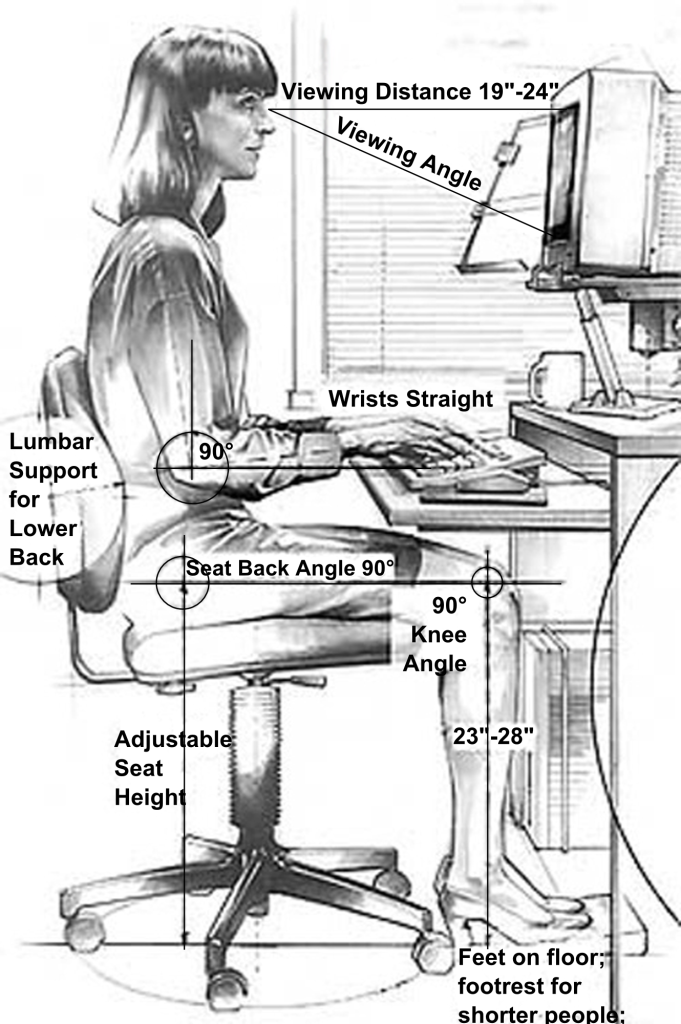4.5 Approaches to Job Design
Industrial Engineering Approach
If workers perform tasks as efficiently as possible, not only does the organization benefit from lower costs and greater output per worker, but workers should be less fatigued, physically, and mentally. This point of view has for years formed the basis of classical industrial engineering, which looks for the simplest way to structure work in order to maximize efficiency. Typically, applying industrial engineering to a job reduces the complexity of the work, making it so simple that almost anyone can be trained quickly and easily to perform the job. Such jobs tend to be highly specialized and repetitive. It analyzes the work methods and sets time standards to see what can be changed, improved and modified.
In practice, the scientific method traditionally seeks the “one best way” to perform a job by performing time-and-motion studies to identify the most efficient movements for workers to make. Once the engineers have identified the most efficient sequence of motions, the organization should select workers based on their ability to do the job, then train them in the details of the “one best way” to perform that job. The company should also offer pay structures to motivate workers to do their best.
Despite the logical benefits of industrial engineering, a focus on efficiency alone can create jobs that are so simple and repetitive that workers get bored. Workers performing these jobs may feel their work is meaningless. Hence, most organizations combine industrial engineering with other approaches to job design.
Job Enlargement
Job enlargement is a job design approach in which the scope of a job is increased through extending and enhancing the range of its job duties and responsibilities. It involves combining various activities at the same level in the organization and adding them to the existing job.
Job enlargement, also called the horizontal expansion of job activities, can be explained with the help of the following example. If Mr. A is working as an executive with a company and is currently performing three activities in his job, and after job enlargement or through job enlargement we add four more activities to the existing job, so now Mr. A performs seven activities on the job.
It must be noted that the new activities which have been added should belong to the same hierarchy level in the organization. By job enlargement we provide a greater variety of activities to the individual so that we are in a position to increase the interest of the job and make maximum use of an employee’s skills. Setting the stage for considering the next level of job design – job enrichment.
There is some evidence that job enlargement is beneficial, because it is positively related to employee satisfaction and higher quality customer services, and it increases the chances of catching mistakes (Campion & McClelland, 1991). At the same time, the effects of job enlargement may depend on the type of enlargement. For example, job enlargement consisting of adding tasks that are very simple in nature had negative consequences on employee satisfaction with the job and resulted in fewer errors being caught. Alternatively, giving employees more tasks that require them to be knowledgeable in different areas seemed to have more positive effects (Campion & McClelland, 1993).
Job Enrichment
Job enrichment is a job design approach aimed at making work more interesting and challenging for the employees. It mainly consists of giving more responsibility and opportunities for impact than what originally applied to the job, creating opportunities for professional growth and recognition.
As an alternative to job specialization, companies using job enrichment may experience positive outcomes, such as reduced turnover, increased productivity, and reduced absences (McEvoy & Cascio, 1985; Locke et. al., 1976). This may be because employees who have the authority and responsibility over their work can be more efficient, eliminate unnecessary tasks, take shortcuts, and increase their overall performance.
At the same time, there is evidence that job enrichment may sometimes cause dissatisfaction among certain employees (Locke et. al., 1976). The reason may be that employees who are given additional autonomy and responsibility may expect greater levels of pay or other types of compensation, and if this expectation is not met they may feel frustrated. One more thing to remember is that job enrichment is not suitable for everyone (Cherrington & Lynn, 1980; Hulin & Blood, 1968). Not all employees desire to have control over how they work, and if they do not have this desire, they may become frustrated with an enriched job.
Ergonomics
There are many injuries on the job. This can happen through slips, falls, moving machinery, accidents with/on/in vehicles, fires, repetitive stress, or overexertion. Any injury costs an employer money through lost productivity and medical costs. Ergonomics is defined by the Government of Canada as “the science of matching the job to the worker and the product to the user” (Government of Canada, 2023). Simply stated, humans have certain capabilities and preferences, as well as limitations when performing their job. Ergonomics ensures the job is safe and effective. As well, it is anchored in improving safety for all employees and ensuring employees are comfortable. The idea is that job is a good fit for the person.

“Job Design” from Human Resources Management – 2nd Ontario Edition by Elizabeth Cameron is licensed under a Creative Commons Attribution-NonCommercial-ShareAlike 4.0 International License, except where otherwise noted.

